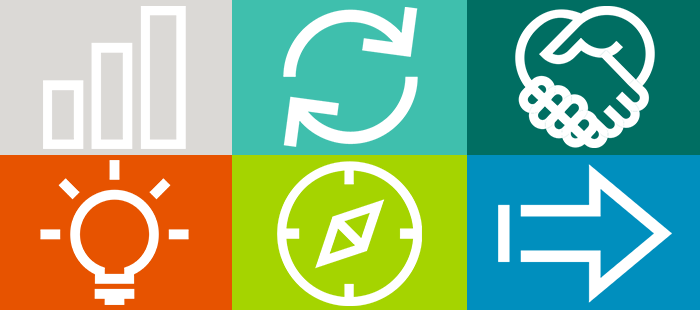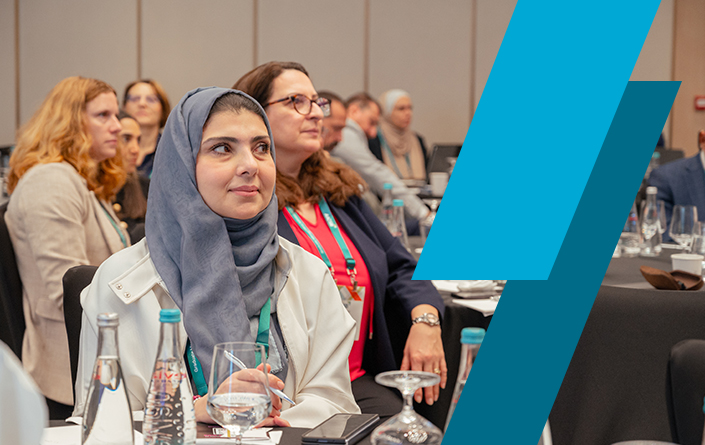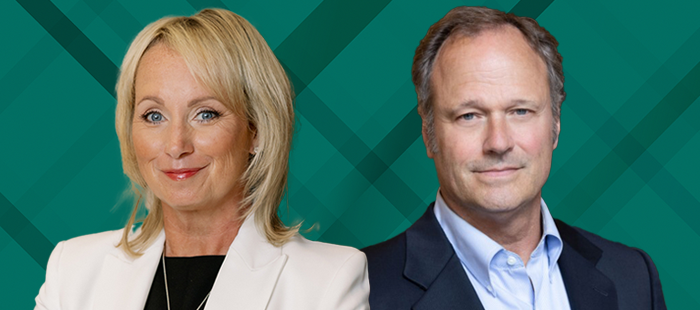Research Roundup: April 2024
Will AI Manage Your Next Research Project?
Much discussion about artificial intelligence (AI) has revolved around concerns that the technology might one day replace human workers. However, two researchers have explored its potential to manage large-scale projects in ways that help human workers be more productive.
Doctoral student Maximilian Koehler and professor of strategy Henry Sauermann, both from the European School of Management and Technology (ESMT) in Berlin, have published a paper in the journal Research Policy that explores the potential for algorithmic management (AM) to facilitate several aspects of projects.
AM, they note, could act as a “project manager” that assigns and coordinates tasks, offers direction and motivation, and provides relevant learning opportunities to human team members. AM support could be especially effective in streamlining and accelerating the progress of large-scale research projects.
Koehler and Sauermann studied several large projects by reviewing online documents, interviewing AI developers and project participants, and even joining some teams as participants themselves. In the process, the pair identified projects that used AM, so that they could take a closer look at how AI performed management functions and where it might be more effective.
They found that endeavors using AM were often larger than those that did not, suggesting that AM might enable projects to scale more than they could otherwise. AM-enabled projects also were able to marshal technical infrastructures—including access to shared AI tools—that smaller, standalone projects might not be able to develop.
“The capabilities of artificial intelligence have reached a point where AI can now significantly enhance the scope and efficiency of scientific research by managing complex, large-scale projects,” says Koehler.
Although AM would require business organizations and higher education institutions to invest in infrastructure, that investment could pay off in the long run, Sauermann adds. “If AI can take over some of the more algorithmic and mundane functions of management, human leaders could shift their attention to more strategic and social tasks such as identifying high-value research targets, raising funding, or building an effective organizational culture.”
The Unsung Benefits of Virtual Meetings
Many business leaders are eager to end the pandemic-era practice of holding virtual meetings, believing that the social distance and technical glitches inherent to video conferencing are detrimental to worker productivity. But companies that switch back fully to face-to-face meetings could do so at the cost of happier and more productive employees, say the co-authors of a new study appearing in the Journal of Vocational Behavior.
The paper’s co-authors include Wladislaw Rivkin, associate professor at Trinity Business School in the United Kingdom; Karin S. Moser, professor at UniDistance Suisse based in Switzerland and the University of Queensland in Australia; Stefan Diestel, professor at the University of Wuppertal in Germany; and Isaac Alshaikh, postdoctoral researcher at South East Technological University in Ireland.The research team surveyed 179 employees during and after the COVID-19 pandemic lockdowns, over 1,071 workdays. The researchers found that on days when these employees spent more time in virtual meetings, they experienced more “flow” in their work—a state of peak intrinsic motivation that leads to greater focus and reduced mental fatigue.
“In the era of hybrid work, recognizing and harnessing the potential of virtual meetings to improve employee functioning and well-being is crucial.”—Wladislaw Rivkin
Virtual meetings also helped employees reduce their tendency to procrastinate and the need to recover from stress, while improving work-life balance.
“These findings challenge the prevailing narrative surrounding the costs of virtual meetings, offering a fresh lens through which organizations can evaluate and optimize their virtual communication strategies,” says Rivkin. “In the era of hybrid work, recognizing and harnessing the potential of virtual meetings to improve employee functioning and well-being is crucial.”
Understanding the Complexity of Overconfidence
When people are confident in their abilities to handle uncertainty due to their knowledge and preparation, they often achieve positive outcomes. But what causes that confidence to transform into its riskier cousin, overconfidence?
Overconfidence can make decision-making a literal gamble—what a study published in Management Science refers to as “betting on oneself.” Because these bets can have such negative consequences in business, several researchers have sought to better understand what contributes to overconfident behavior. They include Mohammed Abdellaoui, professor at HEC Paris; Han Bleichrodt, professor of economics at the University of Alicante in Spain; and Cédric Gutierrez, assistant professor of management and technology at Bocconi University in Milan, Italy.
The research team conducted several experiments, including one in which they divided participants into two groups: One group completed an “easy” reasoning test, while the other completed a “hard” reasoning test. Before knowing their actual scores, participants were asked to make bets on their performance midway through the test, as well as at the end. In each case, they bet on whether they thought their scores fell above or below a certain percentage of correct answers (absolute performance) and on how they thought they ranked out of 100 randomly selected participants (relative performance).
The researchers analyzed participants’ betting patterns to determine participants’ “attitudinal optimism”—that is, whether they were overconfident (their actual performance was worse than they expected) or underconfident (their actual performance was better than they expected).
The researchers found that those taking the hard test were overconfident about their absolute scores, but underconfident about their relative group ranking. Those taking the easy test, however, exhibited underconfidence about their scores but overconfidence about their rank. Additionally, participants in the “easy task” group demonstrated greater attitudinal optimism than those in the “hard task” group.
This finding shows that people can be underconfident about their own absolute performance while staying irrationally optimistic about their performance compared to others. Overall, says Abdellaoui, the study shows a “complex interplay between uncertainty attitudes and overestimation tendencies” that can influence decision-making.
This interplay has real-world implications for decision-making, he emphasizes. Overconfidence might lead CEOs to make unwise acquisitions, entrepreneurs to take out excessively large loans, or business students to overestimate how well they’ll do on tests for which they haven’t studied. In other words, people might “bet on themselves” even when the probability of success is low.
“These findings underscore the complexity of overconfidence,” Abdellaoui says. “This nuanced understanding suggests that effectively addressing overconfidence in decision-making contexts requires targeting both inaccurate beliefs and the attitudinal biases that contribute to this phenomenon.”
A New Ethical Risk: The ‘NGO Halo Effect’
People can be inspired by a noble cause, but when they are “blinded” by that inspiration, they can be more willing to engage in unethical behavior, says researcher Isabel de Bruin. The “aura of moral goodness” that often surrounds charitable organizations can lead to people glorify a charity’s goals and values, causing what de Bruin calls the “NGO halo effect.”
This phenomenon was the subject of the doctoral thesis that de Bruin successfully defended at the Rotterdam School of Management at Erasmus University in the Netherlands. In 2023, de Bruin surveyed 256 employees of charitable organizations worldwide. Respondents shared that they felt deeply connected to their organizations; they described the missions of their charities as “part of their DNA” and an “embodiment of their moral identity.” That devotion, de Bruin finds, can lead people to prioritize those charitable missions over ethics and integrity.
When people identify too strongly with a charitable organization’s aura of goodness, they might find it easier to downplay unethical behavior or adopt an “end-justifies-the-means” mentality.
Survey respondents shared examples of bad acts they had witnessed at their organizations, including discrimination, sexual harassment, and bullying—behaviors that result from what de Bruin refers to as “moral naivety.” Moreover, for 45 percent of these incidents of moral naivety, respondents noted that their colleagues were not sanctioned; moreover, rules meant to prevent such behaviors were weakly implemented or not implemented at all.
When people identify too strongly with a charitable organization’s aura of goodness, it can lead to negative outcomes in two ways, de Bruin explains. First, when behaviors contradict an organization’s internal perception of morality, “it can lead to cognitive dissonance,” she says. “It can be psychologically easier to downplay or ignore unethical behavior, as it means asking fewer, harder questions about yourself and your own perceived identity as ‘good.’”
Second, people who identify with an organization’s mission can adopt an “end-justifies-the-means mentality,” says de Bruin. The survey showed that some charity staff and volunteers “strongly believe that achieving their charity’s mission by any means necessary is OK. This can extend to organizations manipulating data to exaggerate the impact of their work to raise more funds for their mission.”
According to de Bruin, her investigation indicates the need for greater research into the “NGO halo effect” as a new risk factor driving unethical behavior in charitable organizations. Future studies can help nonprofit leaders adopt effective methods to prevent, detect, and address bad behavior among their employees and volunteers.
Research News
■ Thought leadership for family businesses. The Skoll Centre for Social Entrepreneurship at the University of Oxford’s Saïd Business School in the United Kingdom has launched Ownership Project Insights, a new white paper series to provide guidance, case studies, analyses, and data-driven observations to support the impact and growth of family-led businesses. The series is part of the center’s Ownership Project 2.0: Private Capital Owners and Impact.
The first publication in the series focuses on succession and philanthropy in family-led businesses. It features essays from Oxford Saïd MBAs who will be working with family-led organizations. The Ownership Project 2.0 also invites academics and professionals to contribute to the series on relevant topics.
The series was created to improve the “scattered knowledge marketplace” for family organizations, which have great potential to contribute to societal impact, says Bridget Kustin, senior research fellow and director of the project. Ownership Project 2.0, she adds, is a “critical friend” to family-led organizations, providing them with the “tools and knowledge to scale their impact.”
■ Snapshot of prospective student preferences. The Graduate Management Admission Council (GMAC) has released the results of its 2024 Prospective Students Survey. This year, respondents point to data analysis and problem-solving as the skills they most want to develop in their business programs, and demand for curricula focused on generative artificial intelligence is up 38 percent year-on-year. In a trend reversal, the two-year MBA is once again the most popular degree format among respondents, while the Master of Management degree is growing more popular.
Nearly 75 percent of prospective students have identified equity and inclusion, sustainability, and health and well-being as “important” or “very important” to their choice of business program.
In addition, nearly 75 percent of prospective students have identified equity and inclusion, sustainability, and health and well-being as “important” or “very important” to their choice of business program. In addition, more candidates than ever are eschewing study abroad to instead apply to schools in their countries of citizenship.
Except for those in Central and South Asia, prospective students worldwide express a preference for hybrid learning. This trend mirrors the increasing prevalence of hybrid workplaces, says Andrew Walker, GMAC’s director of research analysis and communications. Prospective students’ “appetite for flexibility is increasing,” he says. “While in-person learning remains the most preferred delivery format among most candidates, its dominance among candidates is diminishing.”
■ Podcast on workplace culture. The Haas School of Business at the University of California, Berkeley, has launched “The Culture Kit with Jenny & Sameer.” The new podcast features Jenny Chatman, Paul J. Cortese Distinguished Professor of Management, and Sameer Srivastava, the Ewald T. Grether Professor of Business Administration and Public Policy. They also co-direct the Berkeley Center for Workplace Culture and Innovation.
In each 15-minute podcast, Chatman and Srivastava address a problem submitted by a business leader, drawing on the latest academic research and their years of experience advising organizations on ways to improve workplace cultures. The first season launched with two episodes—one on a question from WD-40 CEO Steve Brass about maintaining a strong work culture, and one on a question from Hubspot CEO Yamini Rangan about keeping hybrid workers connected.
The co-hosts plan to launch new episodes every two weeks. “We hope to expand the reach of the work we've been doing through a new medium with the goal of reaching more people,” says Chatman. “Business leaders can submit ‘fixit tickets’ laying out the topics on their minds. Our goal is to give them actionable steps they can take to improve their organization’s culture.”
Send press releases, links to studies, PDFs, or other relevant information regarding new and forthcoming research, grants, initiatives, and projects underway to AACSB Insights at [email protected].






